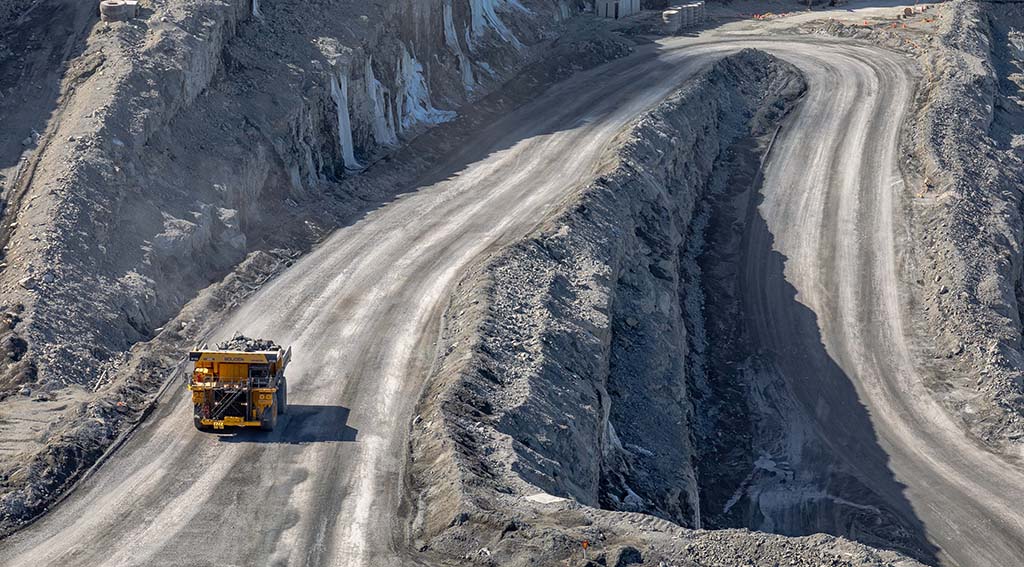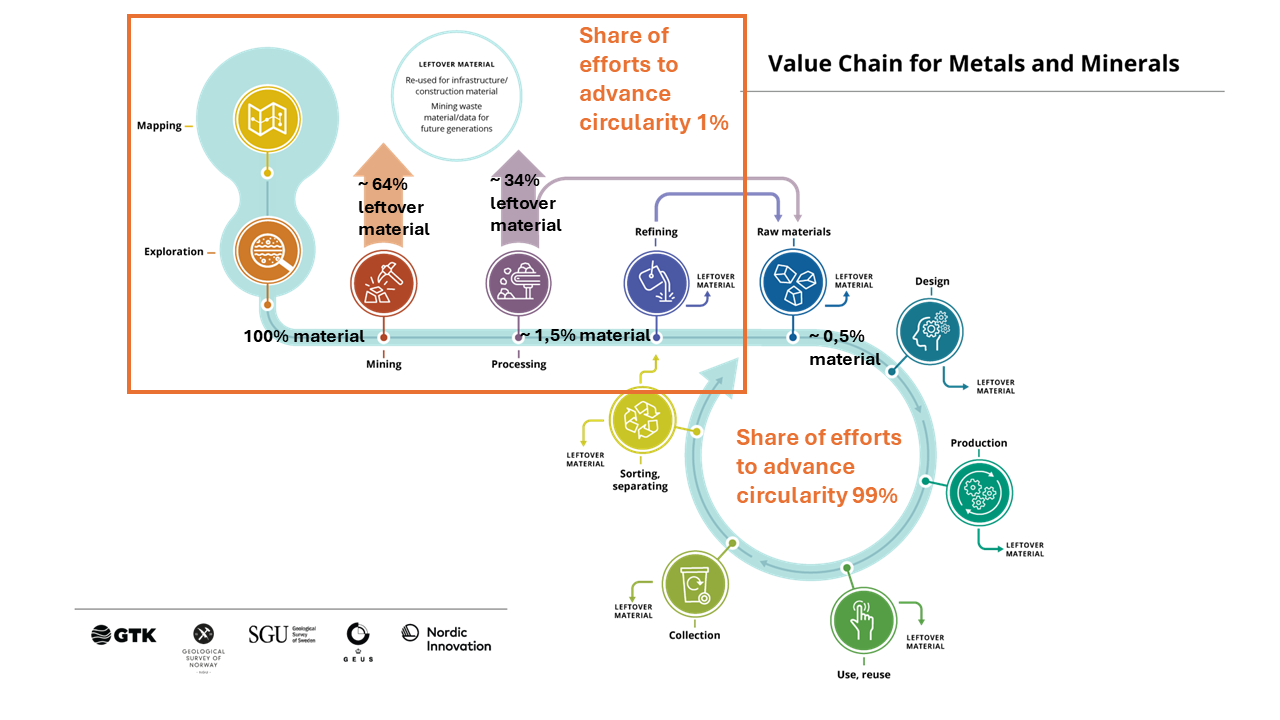Mining Based on Circular Economy Has Many Advantages – Companies and Research Organisations Are Developing Ways for Its Implementation
Approximately 75% of the waste produced in Finland is extractive waste with a low recovery rate. Reducing waste and increasing the recovery rate is significant for society, the economy, and the environment. The project led by the Geological Survey of Finland (GTK) will start developing, together with research organisations and companies, methods for integrating the mining project into the circular economy already at the planning stage.

The mining industry is often based on the linear economy and separate processes. In simple terms, this means that a company establishes a mine, owns the entity, recovers the valuables it needs, and disposes of large quantities of waste for example as waste rocks and tailings.
To enable more sustainable mining activities, the circular economy must be considered already in the planning stage. The implementation of the circular economy can be facilitated by abandoning the linear economy and opening the processes to other industrial sectors. The Circularity-Integrated Mining (CINTEM) project facilitates the utilisation of side streams with a new type of data and planning model. It improves recovery rates, reduces environmental risks, and increases financial benefits.
“The approach of our project is unique. It can reduce waste, such as tailings and waste rock, increase the utilisation of mined materials, improve the quality of final waste, and facilitate the utilisation of old extractive waste facilities, for example as sources of critical raw materials,” says Research Professor Tommi Kauppila, GTK.

The project develops the integration of data enabling the circular economy into deposit and mining models, data flows and methods for mining and mineral processing, new mineral products, recovery of new valuable materials, material cycles at mining sites, and the development of new ecosystems and business models to enable economically viable integration into the circular economy. The project involves close international cooperation with, for example, Chile and Australia.
In addition to research organisations, the cooperation also involves companies. The Co-Innovation project is funded by Business Finland. The two-and-a-half-year project began at the beginning of 2025.
The CINTEM consortium consists of four universities and research institutes:
- Geological Survey of Finland (coordinator)
- VTT Technical Research Centre of Finland
- LUT University
- University of Oulu
The companies involved in their own development projects are
- Tapojärvi Oy and Hannukainen Mining Ltd
- Sokli Ltd
- AFRY Finland Ltd
- Betolar Ltd
- Lateral Engine Ltd
- IMA Engineering Ltd
In addition, these companies are participating with in-kind investments
- Weeefiner Ltd
- Normet Ltd
- LKAB Minerals Ltd
More information
Tommi Kauppila, Research Professor
Geological Survey of Finland GTK
tommi.kauppila@gtk.fi
Tel. +358 29 503 3710
